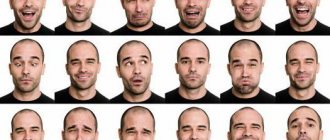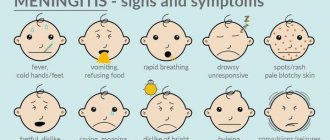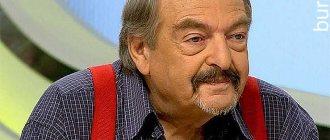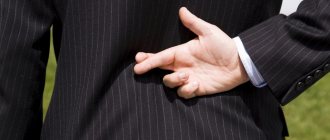The concept of expressiveness came to psychology from linguistics, where it denotes a certain set of means of expression of the author.
In psychology, expressiveness also expresses a person’s attitude to what is happening with the help of a certain set of characteristic behavioral traits, expressions, facial expressions, and movements.
You will find the concept and types of personality accentuations in our article.
Expressiveness is also a quantitative characteristic of a reaction and means its significant, and sometimes even excessive, expression.
What is this in psychology?
The famous psychologist and scientist A. Maslow argued that expressiveness is a manifestation of the normal functioning of the human psyche, since it expresses its attitude, capable of being noticed by other people.
Expressiveness is a special form of contact and communication with other individuals, being a powerful signal of a person’s expression of opinion or attitude.
To express expressiveness, a person can use different techniques and methods: from behavior style to clothing style. Appearance can already indicate the severity of this possibility in an individual.
Many people deliberately hide their attitude to what is happening and dampen their expressiveness, thereby forming an internal conflict.
Others, on the contrary, are prone to unlimited expression, which can also contribute to the discomfort of both the person himself and those around him. Expressiveness as a psychological concept is reflected at all levels of the human psyche : behavior, habits, reactions, psychological syndromes.
Expressive behavior
In science, personal expressive behavior means a combination of persistent and changing means of expression that are organized into various types of structures. They are rebuilt in the process of creating social and psychological personal qualities.
Such a combination of means includes parts that have different developments of change, and also differ in the level of effort required for this purpose. So, the composition of personal expressive behavior contains parts that have a high level of inconstancy (facial expressions, intonation), including medium and low levels. If a person is expressive, this also includes physiognomic elements of expressiveness; clothing and hairstyle belong to the average level of inconstancy. There is also the concept of “human expressive repertoire,” which means a set of postures, intonations, gestures, facial expressions and their combinations for various communication situations.
What is an expressive person? This means that the behavior of an individual is a constantly changing self-sculpting. Our body is a mirror that reflects the action of appearance and soul. Internal personality changes lead to external changes . For this reason, appearance is not a random combination of elements, but a strict, clear reflection of personal characteristics.
In experimental science, the unstable elements of expression . It is a combination of movements that constantly change according to the position and attitude of the person. Such movements are shown using an optical system. Visual communication methods by psychologists include kinesics. It represents the breadth of movements, which is perceived visually and carries different information from different points of view of the partners. It includes only demonstrative gestures and poses with clear semantics.
Expressive people are characterized by emotional, expressive behavior
Expressive actions in the form of the external “I” are associated with its unstable and persistent substructures. It is a valid indicator of many personality traits . It can be viewed as:
manifestations of expressive elements of general personal activity, which is associated with temperament; expressive composition of mental states; an indicator of the modality of signs of connection between one person and another; ways of expressing qualities; a sign of personality development as a subject of communication; showing expressive elements of a person’s social status; hiding the external “I” of the individual; way of demonstrating and creating acceptable behavior.
Types of expressiveness
Expressiveness can be divided into the following options:
- Motor : reflects a physical, muscular reaction. Russian physiologists I. M. Sechenov and I. P. Pavlov studied the severity of reflex activity and the degree of motor activity in response to various stimuli. Motor reactions expressed the degree of severity of the reaction.
- Emotional : describes a subjective attitude to what is happening; expressiveness can manifest itself both in positive emotions in the form of joy or delight, as well as in negative ones: anger, crying.
- Behavioral : expresses the characteristics of human behavior depending on the level of expressiveness. At the same time, it is a higher level in relation to the previous ones. Behavioral expressiveness is manifested in the severity of reactions assessed by others.
At the junction of the first two types are speech and facial expressiveness, which is realized with the help of characteristic speech patterns, the work of facial muscles in the form of certain “masks,” sets of microexpressions.
What is expressiveness
The expressiveness of speech allows the speaker, in addition to the main content of the statement, to convey some information about himself, a personal attitude towards what he is talking about. Moreover, such transfer mostly occurs unconsciously.
By the expressiveness of speech, one can understand which social group or category a person belongs to, what qualities are characteristic of him - and if this message is impulsive, involuntary, therefore it is often the most truthful.
The expressiveness of an utterance often reveals the speaker’s true attitude to the subject, an attitude that is sometimes negative, which he would not have expressed if he were not at the peak of emotions: irony, skepticism, condescension, disdain. That is, he subjectively places the object below himself, rises above it, which makes his speech expressive. It seems to the speaker that he has expressed certain objective properties of the object.
Much less often, the expressiveness of an utterance carries a degrading attitude - when the speaker belittles himself. This was common earlier in history, for example, when a commoner addressed an official, calling himself not Ivan or Peter, but Ivashka, Petrushka. There is a simple way to see the direct consequence of this human tendency to unconsciously endow oneself with a high position by tracing the number of suffixes in speech that express upward and downward attitudes - dozens of derogatory, belittling, diminutive ones versus just a few suffixes that allow one to express an elevated attitude. An increasing expressive attitude is also often characterized by a top-down attitude not only to the subject of the statement, but also to the listeners. In the message, the speaker seems to emphasize that he belongs to some prestigious group to which the listeners do not belong. This can be clearly seen in criminal or youth slang.
In linguistic analysis of speech and content analysis, which psychologists use, it is possible to determine several degrees of expression: from a slight form of deviation from literary speech to extreme sharpness. The first, mild degree of expressiveness shows that the speaker has well mastered and knows the subject he is talking about, and therefore endows his speech with a certain emotional component. Highly expressive speech can express familiarity, rudeness, disdain, intimidation, and contain obscene elements. The tools of such analysis are the study of the choice of words, morphemes, endings, stress, and, if possible, intonation and gestures.
What are the top-down mechanisms for expressing positions? The first is the use of a slang or colloquial word, morpheme, or suffix instead of a neutral name for an object.
The second is belittlement by various means, such as elimination, truncation of the main name of an object while preserving only its additional names.
To clearly explain the concept of expressiveness, we can give the simplest example from criminal jargon, in which a document is called “xiva,” which reflects the speaker’s opinion of his high awareness and disdain for it.
Another example of expressiveness is found in youth slang - when saying, for example, “fun,” young people, by choosing the suffix “ear,” express their condescension or negligence. The number of words with similar suffixes expressing a negative assessment has increased significantly today, which is especially clearly visible on the Internet.
Expressiveness of speech may also be due to the desire for economy in means of expression. This allows you to make speech more pragmatic, and the emotional component allows you to use the imagery of perception.
Causes
There are several reasons for this phenomenon:
- anatomical-functional or biological,
- genetic,
- socially determined
- historical.
Biological reasons form the material basis of the ability to clearly express one’s “I”.
This includes neurotransmitter systems, metabolic features, and constitution.
Adrenaline and norepinephrine are responsible for the severity and speed of the reaction, the ability to euphoria is due to the presence of endorphins, serotonin and dopamine.
Depending on the activity of these systems, as well as on the speed of inactivation of products, characteristic behavioral features .
A special structure of the brain called the limbic system is responsible for the emotional sphere. With its active work and stimulation, emotional and motor activity increases.
In depressive states, when there is a marked decrease in expressiveness, a deficiency of serotonin is observed, which is what therapy is aimed at. However, this does not mean that only biology governs behavior.
Genetic reasons predetermine the structure of the body, and accordingly its anatomical and physiological characteristics, as mentioned above.
Expressive person, who is he?
An expressive person rarely goes unnoticed. His appearance and behavior usually speak before the dialogue with him.
Characteristic features of such a personality:
- Fast, sweeping movements with large amplitude.
- A large number of small movements accompanying gait or speech, active articulation and gestures.
- Jerky, abrupt nature of movements.
- An abundance of words in the dialogue, a loud voice, laughter that attracts attention.
- Lively facial expressions, easily interpretable.
- Mannered behavior, pretentiousness.
- Real or fabricated role of the leader, “ringleader”.
The fabricated role of a leader means that a person is ready to accept all the attention and all the rights of a leader, but is not ready to bear responsibility.
An expressive person does not always mean confident or dominant . It often happens the other way around: with outwardly bright behavior there is a lack of willpower and self-control.
Such people often make a lot of promises, make a lot of plans, and also like to express their opinions in public.
Expressive girls often attract attention with their atypical persistence in expressing themselves or responding to communication.
They are often the center of men's attention, but have difficulty building relationships due to lack of restraint. Also, expressive ladies are characterized by lability of emotional reactions and a tendency to hysteria .
The first sign of female expression is appearance: bold combinations of colors and models predominate, often absurd, but lively facial expressions and visible optimism successfully compensate for such inconsistencies.
Meaning of the word expressive
Examples of the use of the word expressive in literature.
We are talking about something in between an expressive way of expressing an experienced situation, on the one hand, and distancing, reifying, abstracting talking about it, on the other.
Alena: Natural expressive style produces the opposite effect: it allows us not only to accurately, adequately and harmoniously convey our state of mind, feelings, thoughts, emotions, but also rejuvenates and ennobles our face, gives it individual charm, makes it lively and expressive!
Expressive techniques inherent in the performing style of gypsy singers, very popular at that time, also occupy a large place in Gurilev’s work.
Moreover, if our goodwill and love require discharge in the interests of our own health - we are, after all, an emotional, passionate, expressive, sociable being, in a word, an animal.
The former song-romance cantilena was replaced by the melody of an expressive monologue and tense speech intonations.
Expressive recitation and a wide cantilena, choirs and ensembles, ballet, and a developed orchestral part serve to embody a deeply lyrical concept.
Harunobu, an artist who created delicate images of women in landscapes imbued with a poetic mood, Utamaro, who strove for individualized female images and subtle, iridescent tones of color, and Sharaku, who specialized in depicting expressive, emotional portraits of actors.
I needed all this expressive preface in order for the fundamental, qualitative novelty of G.’s biopolymers to become fully apparent.
Subsequently, excitability is a consequence of the accumulation of experience of affects, especially in conditions of physical inactivity and blocking of emotional release in children with choleric temperament, extroverted and prone to expressive expression of feelings.
Internal and external determinants A characteristic feature of functional behavior is that it is determined by external determinants to a greater extent than expressive behavior.
He uses such expressive types of choral intonation as whispering and half-speech.
Expressive meaning - since a linear image can evoke certain emotions, since lines can express the subjective feelings of the artist, since with their combinations, consonances and dissonances, community or collision, they can excite or calm the viewer, and generally create a certain mood in him.
Morris Merleau-Ponty Posture, gait, melody of voice, facial expressions and gestures constitute the universal language of human expressive self-expression.
From here we can conclude that even if expressive behavior influences external reality, then this influence is unmotivated, unintentional, epiphenomenal in nature.
There we also showed that such phenomena as depression, catastrophic behavior described by Goldstein, and feverish behavior described by Mayer, the phenomena of catharsis and self-liberation can rightfully be classified as expressive, and therefore unmotivated, phenomena.
Source: Maxim Moshkov library
Characteristics of behavior
With this model of behavior, actions that attract attention predominate: such people tend to be the center of everyone's attention.
They often become successful actors, singers, and musicians. Expressive behavior is characteristic of a creative environment .
Also in this behavior there is often a duality of standards: confident in public, such people are indecisive in their real actions, often trying to shift responsibility to someone else.
Expressive behavior is often associated with directness and honesty, but with the right skill, behavioral reactions can skillfully simulate something. Behavior is characterized by a constant dynamic desire: from the speed of movements to the speed of decision-making.
Speech is dominated by affirmative sentences and exclamations , both positive and negative. Sentences are constructed from complex constructions, characterized by an abundance of interjections, prepositions, and adverbs.
There are usually traces of facial wrinkles on the face, especially around the eyes, rapid movement of the eyes and lips, and a constantly changing facial expression.
A striking example of an expressive personality is the hero of Russian folk tales, Ivanushka the Fool .
His sweeping movements, elastic gait, fast and bright speech, as well as his image in eye-catching clothing colors with an expressive smile on his face allow us to create a portrait of an expressive person.
Forms of expression
Today we are talking preferably about the expression that is characteristic of people. How does an emotional person express himself? There are three such ways:
- Facial expressions – conveying emotions through facial expressions.
It has been established that there are 57 facial muscles on the face, which in different configurations indicate different emotions.
Tolstoy was able to describe 87 eye expressions and 97 shades of a smile! And there are also eyebrows, nose, mouth, forehead, cheeks, etc., which also participate in demonstrating our feelings.
For example, when you are surprised, your eyes open wide, your eyebrows “creep” up, an “accordion” forms on your forehead, your mouth becomes like the letter “O”, etc. Seeing all this on someone’s face, we immediately understand that the person is surprised by something.
Fear, shame, joy and other feelings - each of them has its own specific facial portrait.
- Pantomime – a set of movements, gestures and postures.
Bodily expression also demonstrates to others the psychological state of the individual, his mood. For example, when you are angry, your fists reflexively clench, your arms tense, your body leans forward, etc.
Sadness manifests itself in drooping shoulders and head, a shuffling gait, and hanging arms. A joyful person gesticulates a lot, his movements resemble a dance, his gait is elastic and springy. - Speech expression is the “brightness” of intonation and the special construction of words and phrases. Intonation is more or less clear: the voice can be loud-quiet, soft-hard, etc.
The situation is more interesting with words . Say two phrases out loud: “my beloved husband” and “my beloved husband” (the word “husband” can be replaced with guy, coffee, tie...). There are only two words that differ here - “beloved” and “darling”.
At first glance, they mean the same thing, but they carry different emotional connotations. “Beloved” sounds somehow more strict, ordinary. What about “darling”? It sounds so gentle and cute, as they say now.
Or here's another example. The word "hand". Well, hand and hand. What if it’s a “handle”? "Little hand"? What about the “hand”? Do you feel the difference? These words evoke different responses inside, which, by the way, writers successfully use - provoking different emotions in the reader.
Expressive crowd concept
Such a crowd of people is formed against a general excited background : all members of this crowd are in high spirits and, as a rule, ready for action, but they do not perform any action.
An expressive crowd has no goal, but has great energy potential; individuals are united by the similarity of their state and readiness to express it.
Such a crowd usually has a leader, but this does not always give purpose to the crowd of people.
A striking example of an expressive crowd can be seen at football matches or carnival processions.
In some cases, such a crowd poses a danger because it has no means of control or direction and is subject to the chaotic influence of an excited mood.











